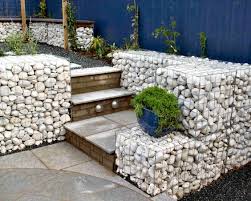Retaining walls are essential structures designed to prevent erosion of soil, control the runoff of water, and also create level terraces on sloped landscapes. If you are considering the options for retaining walls, gabions (gabiony) and traditional wall retaining are two of the most popular choices, each with their own advantages and disadvantages.
Gabions: An Overview
Gabions are cages made of wire which are filled with concrete, rocks or any other material. They are often employed for erosion control as well as stabilization of slopes. Gabion walls are highly versatile and can adapt to various types of terrains. Their design allows for natural drainage, decreasing water pressure behind the wall, and reducing risk of erosion. Gabions are particularly effective in areas with large water flows or soils that are unstable.
One of the main advantages of gabions is the flexibility. They can be easily adapted to different dimensions and shapes, making the perfect choice for terrains with a lot of. In addition, gabions blend nicely with the natural environment due to their rock-filled appearance. This contributes to a natural appearance.
However, gabions also have some limitations. They might require more care in the future, since the wire mesh could corrode and the rocks might move or settle. The construction process involves placing each cage and filling it with rock, which is a labor-intensive.
Traditional Retaining Walls: An Overview
Retention walls that are traditional are generally constructed from materials such as concrete, brick or even stone. They are famous for their durability and strength. Concrete retaining walls, in particular provide a great degree of stability. They are also customized with various finishes to match aesthetic preferences. They are perfect for areas needing a solid barrier to prevent the dumping of huge amounts of soil.
Traditional retaining walls give an appearance that is more uniform and can be designed to withstand heavy loads. They also are less prone to issues with maintenance compared to gabions. However, they often require drainage systems that are properly designed to stop water from accumulating in the walls, and this can lead to structural issues.
Comparison
In the end, gabions provide flexibility and a natural integration with the landscape but could require more care. Traditional retaining walls offer strength and endurance with lower maintenance but might lack the flexibility of gabions. The decision to choose between gabions or traditional retaining walls is contingent on the particular requirements that the construction project has, which include budgetary constraints, aesthetic preferences and environmental conditions.
